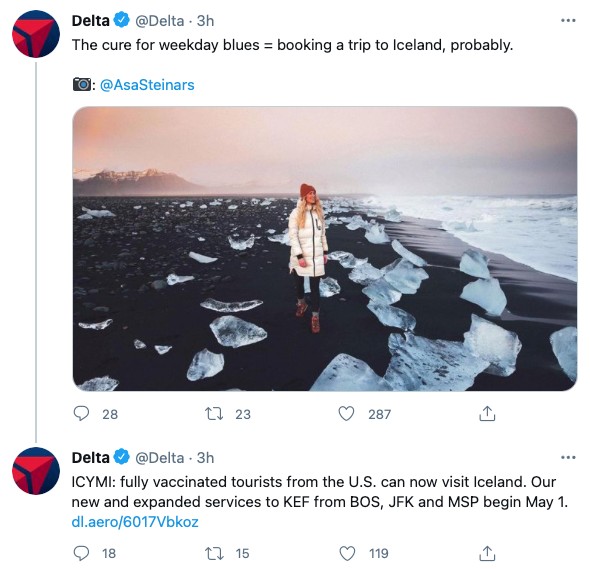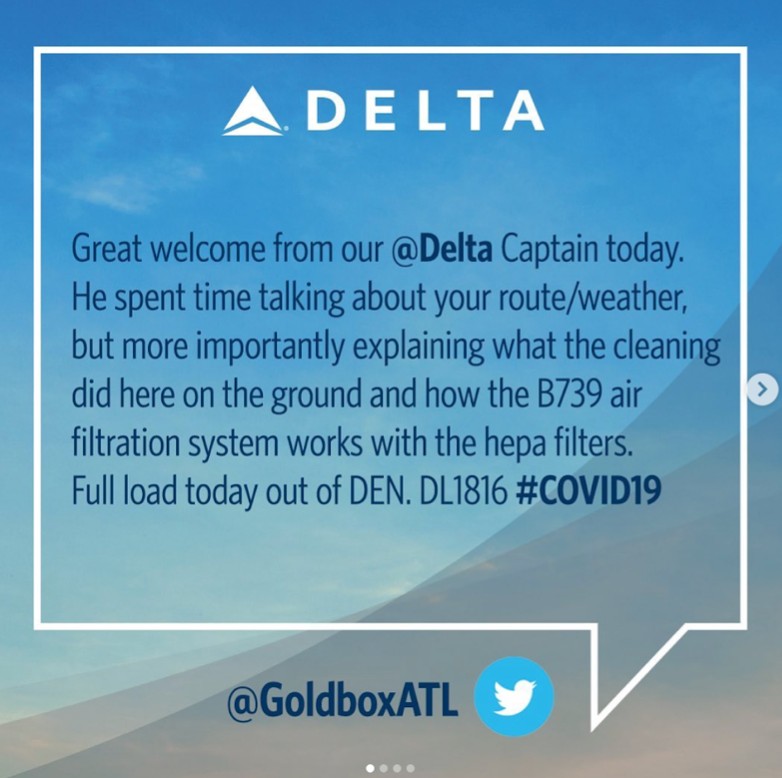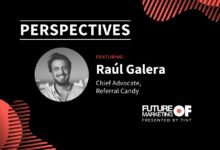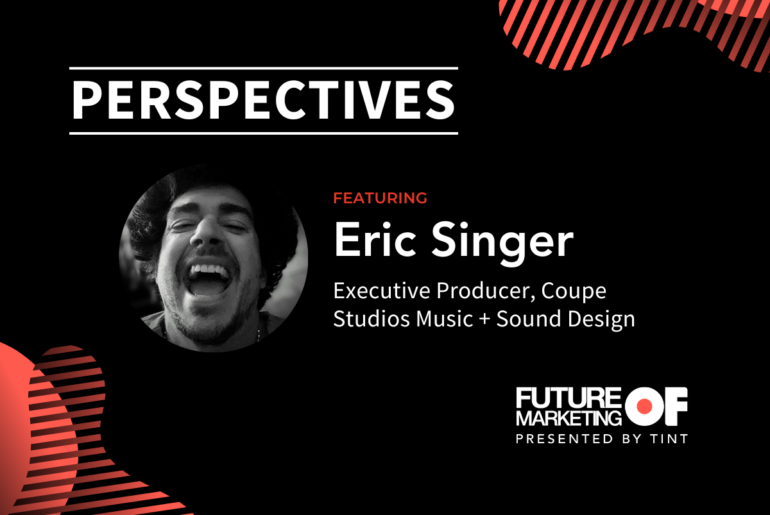It seemed to be the most common prediction for the post-COVID-19 world.
People wouldn’t want to travel again, for an unpredictable amount of time. In a Morning Consult poll, only 13 percent of Americans surveyed said they’d be willing to fly before the end of 2020.
The travel and tourism industry bunkered down as they came to see no direct timeline for when people would feel comfortable traveling again.
It looks like the wait is officially over.
“About 1.36 million passengers passed through security checkpoints Friday, [March 12th, 2021]. That is the highest volume since March 15, 2020, when checkpoints reported more than 1.5 million passengers,” says NPR.
Travelers are getting ready to pack their bags, but that doesn’t mean they feel 100% comfortable with booking flights. The travel and tourism industry needs marketing in place that shows they have their customers’ safety in mind—and that they’re still taking COVID-19 seriously.
This sparks the future of travel and tourism marketing.
Where is Travel and Tourism Marketing Now?
Travel and tourism marketing is different depending on where you are.
If you’re in Asia, you might not realize that COVID-19 is still drastically affecting Americans. If you’re in America, where all citizens became eligible for a vaccine on April 19th, you’re in a different situation than someone in the United Kingdom. In the UK, there’s a new reopening after another lockdown.
Marketers are working overtime to be able to reach audiences where they are, as everybody continues to experience the aftermath of COVID-19 differently. With engagement as the number one goal for marketers in 2021 (despite having smaller teams and resources than ever), meeting people where they are has become a crucial part of marketing.
Delta is the perfect example of meeting their customers where they are. Their tweet looks like a pre-COVID-29 message: “The cure for weekday blues = booking a trip to Iceland, probably.” Alongside user-generated content from a traveler, they’ve done a great job of showing their Twitter audience what a trip to Iceland would look like.
But how are they focusing on how it feels to travel right now? Check out their second tweet. By using targeted audiences inside of Twitter, they’re able to know where their audience is. Now, they can serve them ads specific to what travel they’re allowed to do.
In this case, Americans can now visit Iceland as long as they’re fully vaccinated.
Personal marketing has continued to pave its path into mainstream marketing methods like paid advertising. Thanks to ad platforms’ extensive knowledge of their users (for better or worse), personal marketing is giving companies the ability to not just advertise beautiful locations. They can also make their customer feel comfortable with booking their ticket.
It’d be hard to say that marketing is moving anywhere else but an even more personalized marketing experience.
The Future of Travel and Tourism Marketing
We’re not going to say the future of travel and tourism marketing is a more personalized experience because that’s obvious. Based on rising personalization technology, we’ve seen this type of marketing on the horizon for a year or so by now. What we haven’t seen, and could have never predicted, was how this marketing would impact uncertain and scared travelers.
With a personalized approach, marketers (like those at Delta) can ideate marketing campaigns that make their travelers feel safe and comfortable. These campaigns can lean on the latest digital technology adoption to get more eyes on their products.
Oxford Street, an infamous shopping district in London, was able to get 93 million social impressions by sharing their annual Christmas Tree lighting online. Not only were their views through the roof, but they were able to display UGC on their website to bring viewers into the experience.
Just because vaccinations are rolling out, doesn’t mean travelers don’t want their airplane seat and tray wiped down or their hotel room not to comply with COVID-19 sanitization guidelines. It means they need more information than how much a flight, hotel, or travel experience costs.
Marketers will need to add COVID-19 safety and peace of mind alongside the benefits highlighted in their campaigns, as well as online experiences where possible. Target audience research needs a new category: How does our ideal customer feel about traveling in relation to COVID-19?
- Are they really nervous?
- Are they neutral about it?
- Are they not worried about it?
Figuring out how the target audience feels about traveling in a post-COVID-19 world isn’t an option for your 2021 campaigns. It’s a necessity.
With consumers facing new emotions around travel, relieving their hesitations and objections is a priority of every campaign. Like Delta, finding a mix between your products and your commitment to customer safety is crucial. The personalization of that will be the cherry on top.
When it comes to adapting to travel and tourism marketing changes, brands need to start building the foundation of 3 main strategies.
#1: Messages of Safety from Customers and Employees
User-generated content (UGC) and employee-generated content (EGC) get higher engagement than brand-created content. As marketers put together campaigns highlighting their attention to safety as they reopen the plane, hotel, and tourism doors using the customer’s voice statistically works better.
Specifically, for messages of safety. Instead of telling customers how clean and sanitized everything is—find the content being shared from customers and employees saying the same thing.
We saw Delta practice this effectively at the start of the pandemic. We thought this type of messaging would be temporary, but it’s clear that content like this is relevant and necessary.
#2: Collaborations with Trusted Figures
Collaborations with influencers aren’t a new strategy. We’re not mentioning it to pretend we’re the first to figure out that influencer marketing works. What we do need to remind you of is the power of nano- and micro-influencer marketing. As influencer marketing took off, brands looked for the shiny object.
The influencers with 100,000+ started raking in those brand deals while their engagement decreased and their conversions barely existed. When you look to collaborate with trusted figures for your travel and tourism campaigns, you have to remember the trust aspect of marketing.
People don’t trust celebrities or high-profile influencers as much as they trust nano and micro-influencers. These smaller influencers tend to have better relationships with their audience (as seen by their engagement numbers) and can pull just as many, or more, conversions. While some of these small influencers are professional (or aspiring) influencers, others are people with different aspirations but plenty of family, friends, and acquaintances to share their brand experiences with.
Travelocity ran ‘the most successful marketing campaign in their history’ using a contest centered around their #IWannaGo. By giving away a dream vacation, Travelocity was able to inspire over 25,000 people to market their brand on Twitter, Instagram, or Vine to win the grand prize. All 25,000 of these people were nano and micro-influencers.
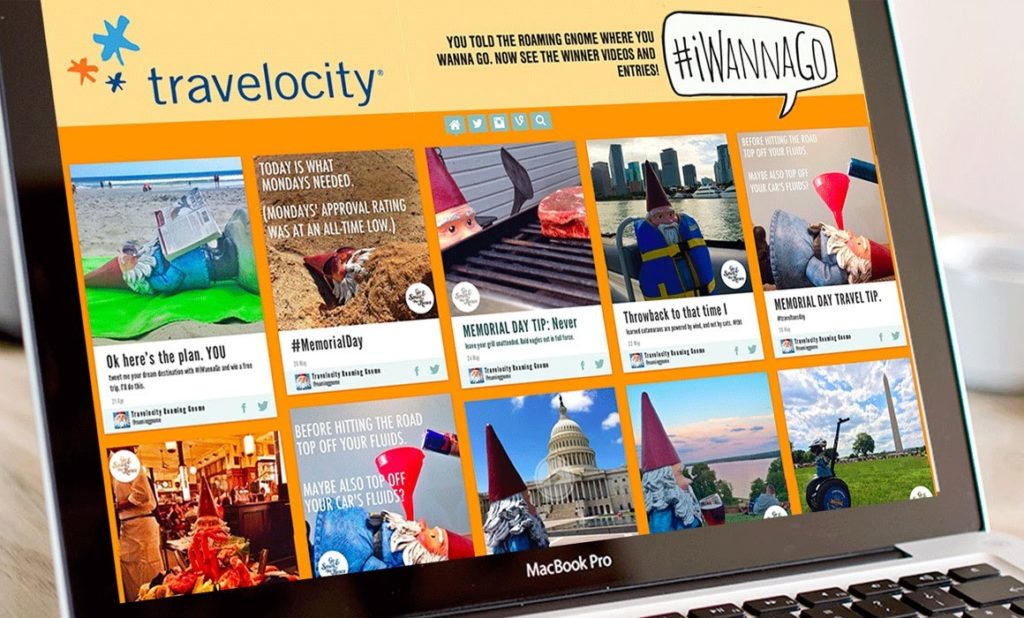
#3: User-Generated Content Across Marketing Channels
Not only does user-generated content get more engagement, website clicks, and conversions—but consumers want brands to tell them what type of content to create. We’re moving towards a collaborative environment, where customers will continue to happily share their experiences flying, staying at a hotel, or visiting a country.
Brands are in the perfect position to collect, organize, and repurpose UGC to their marketing channels. With UGC, brands are able to have an incoming stream of new content while getting direct feedback from their customers. Leading brands can find and collect user-generated content and automatically repurpose it across their marketing channels and to website or digital ‘walls’.
Loews Hotel uses UGC to solve its content scale challenge. Marketers feel the pressure of needing to publish more content that resonates with their audience, but also have restrictions on time, budget, and team size. Loews Hotel tapped into the power of UGC to generate thousands of pieces of engaging content that their marketing team can repurpose in magazines, advertising, and booking pages.

With travel picking up, the travel and tourism industry can position itself to help consumers live their postponed travel dreams. With messages of safety, collaborations with trusted figures, and UGC from fans and customers companies can showcase why travelers should choose them.
One and a half million people are moving through security and that number is expected to rise as vaccinations continue to roll out across the globe.
Subscribe here to receive weekly Future of Marketing insights and strategies.

